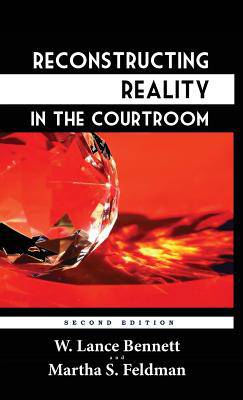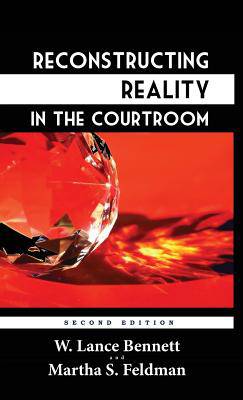
- Retrait gratuit dans votre magasin Club
- 7.000.000 titres dans notre catalogue
- Payer en toute sécurité
- Toujours un magasin près de chez vous
- Retrait gratuit dans votre magasin Club
- 7.000.000 titres dans notre catalogue
- Payer en toute sécurité
- Toujours un magasin près de chez vous
Reconstructing Reality in the Courtroom
Justice and Judgment in American Culture
W Lance Bennett, Martha S Feldman
Livre relié | Anglais
58,45 €
+ 116 points
Description
Reconstructing Reality in the Courtroom explains what makes stories believable and how ordinary people connect complex legal arguments and evidence presented in trials to assess guilt and innocence. The explanation takes the core elements of narrative--the who, what, where, when, how, why--and shows how average people who hear hundreds of stories every day use the connections between these elements to assess credibility. - A series of simple experiments outside the courtroom provides evidence for the explanation, showing that there is little relationship between the actual truth of a story and the degree to which the story is believed to be true by an audience of random listeners not familiar with the teller. So, how do jurors make a particular legal judgment? Based on courtroom observation, trial transcripts, and credibility experiments, Bennett and Feldman create a method of diagramming stories that shows exactly what makes some stories more believable than others. Prosecutors and defense attorneys can use this method of analyzing stories to weigh the strategies and tactics available to them; scholars can use it to assess the process of legal judgment. - Now in its Second Edition, this much-cited resource adds a new preface by the authors, as well as new forewords from divergent perspectives. From his experience in law practice, William S. Bailey notes that the authors "adapt a broad structural framework of storytelling to the criminal trial context, making it come alive in the dynamic real world courtroom environment." Law-and-society scholar Anna-Maria Marshall writes that the book's "emphasis on storytelling will resonate with scholars studying legal consciousness, where narrative plays an important theoretical and methodological role. ... This new edition will be a welcome addition to the Law and Society community." - "Reconstructing Reality in the Courtroom is as timely as it was when this classic was first published. Here Bennett and Feldman provide great insight into the importance of storytelling as a basis of justice in American criminal trials. It deserves very wide readership." - Elizabeth F. Loftus, Distinguished Professor, University of California, Irvine; Author, Eyewitness Testimony (1996)
Spécifications
Parties prenantes
- Auteur(s) :
- Editeur:
Contenu
- Nombre de pages :
- 218
- Langue:
- Anglais
Caractéristiques
- EAN:
- 9781610277990
- Date de parution :
- 02-06-16
- Format:
- Livre relié
- Format numérique:
- Genaaid
- Dimensions :
- 140 mm x 216 mm
- Poids :
- 399 g







